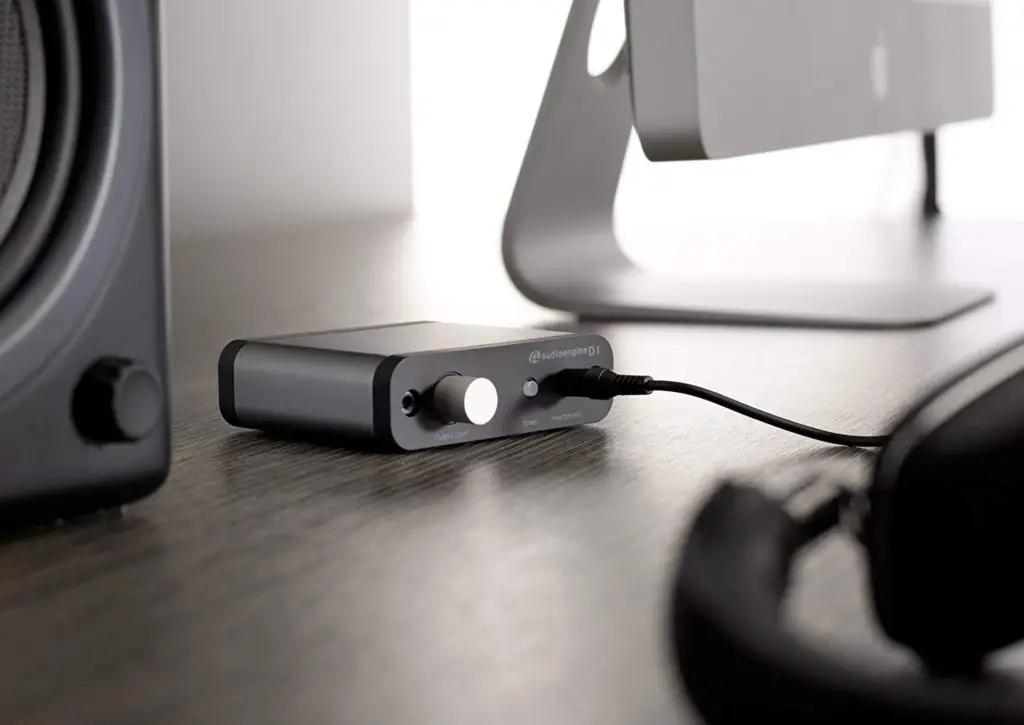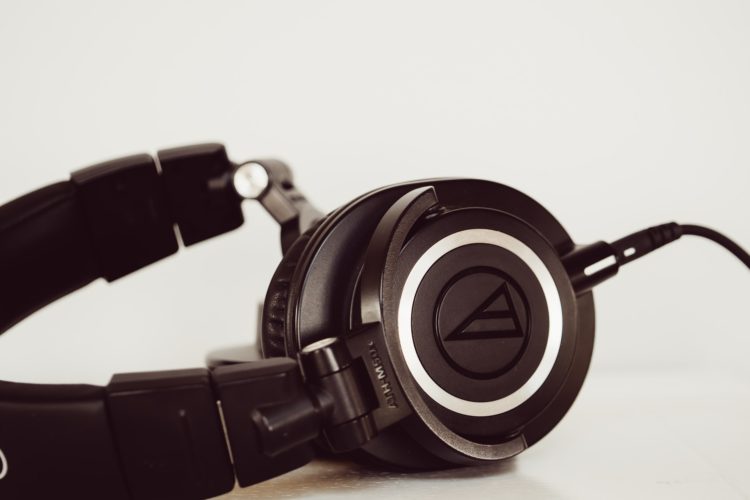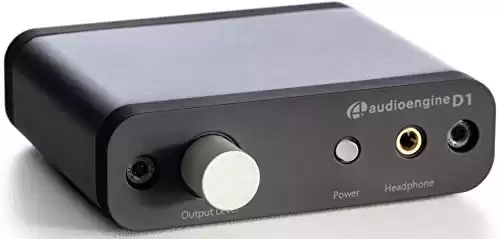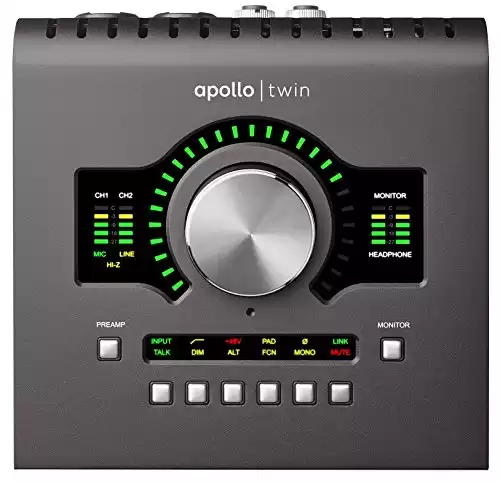Have you ever heard that headphones need to go through a burn-in period? It seems many people have heard this though just as many haven’t. What’s important here is finding out whether it’s true or not.
So, do headphones really need burn-in? No, they don’t.
If you never heard of the term burn-in before, it’s a popular belief that dictates you should loudly play sample sounds such as pink noise in your headphones right after you first buy them.
It’s basically a myth, but there is a kernel of truth to this myth. See, the component that needs to be broken in is the speaker element and the housing for it. The materials the headphones are made from will lose their rigidness as time goes by thanks to regular repeated forces and exposure to heat. When it’s less rigid, it’s supposedly easier for that speaker element to move faster. When it moves faster, it’s said to give better performance.
Essentially, the drivers and housings in your headphones will become less rigid in time, but it won’t create any audible change in the performance that you can measure, at least not anything that will improve it anyway.
Yes, larger headphone elements do encounter larger amounts of material change throughout time but the amount you’d need to use it to change the sound quality would be insane.
Any so-called evidence for this can only be shown for 1db or less, which much as you’d like to hear, you can’t.
Burning in speaker component stems by performing a simple quality assurance test is performed in some of the places where headphones are manufactured.
They do this for a period of time to see if the drivers for those headphones can withstand this kind of use. It’s basically to see if that performance changes or depletes during that time and if it does, it breaks.
Likewise, this practice is completed on other machines we buy from cars to cameras to computers and other pieces of technology.
Headphones are just another piece of technology that needs to be tested before release to the market.
So, if you hear a change in sound that is so severe you can hear it, you really should be concerned. If you’ve only been using them a total of 50 hours, you shouldn’t expect them to be suddenly less rigid.
Loss of rigidity in your headphone speaker materials takes longer to stop moving which means echoes, ringing, and more noise which is why burn-in is a silly idea, at best.
To understand this better and fully enjoy your new headphones, keep reading about burn-in below!
Evidence as to why burning in headphones doesn’t make any difference
Burning in headphones may seem scientific and brilliant, but it doesn’t make a bit of difference in the performance of your headphones.
Save your arguments for something else because scientific research has spoken. We’re here with the hard facts for why it’s a waste of your time to perform a burn-in on your new headphones and why you should simply just enjoy them right out of the box.
– Manufacturers don’t do it
While they DO burn-ins to test the reliability of new parts when updating and coming up with new products and technology, manufacturers don’t burn-in products off the production line.
Why is that, you might ask? Because it doesn’t do any bit of good. If it did, manufacturers would simply do this first before boxing them off the production line and shipping them out.
It would be foolish to skip a step to improve optimum performance if it were completely necessary, wouldn’t it? Indeed.
– Scientific evidence by audio engineers
But perhaps you think the manufacturers want us all to buy their headphones at high prices and skip that burn-in so that they can get you crawling back to buy more.
While that’s a bit far-fetched, we can dig that people have conspiracy theories. Still, a chat with an audio engineer can set you straight.
Audio engineers have found inconclusive evidence that doing a burn-in is beneficial. These are people that make a living off engineering sounds so they’d know a thing or two.
Even in an experiment conducted in 1997 by Shure between a pair of headphones that had undergone a burn-in process and a completely new and untouched pair, while they did sound somewhat different from one another, there was not enough evidence to support it. And no evidence of such still exists nearly two decades later, which is very telling.
– Experiment by Hertsens
Following that, Hertsens did a more in-depth article about the burn-in process. They chose a pair of Q701 headphones and enacted this process for over 300 hours.
On a graph, there was some very minor change in the performance, but those changes were so minor and minuscule that it bore no grounds for these claims.
Remember, 300 hours is a long time. And for those changes to be so minor that even experts claim they have little potential to make a difference, it makes sense to say that you really don’t need to burn-in your headphones.
If you still insist on burning in your headphones here’s how
Perhaps you’ve just bought a nice, pricey pair of good headphones and you’re still interested in breaking them in even though the evidence mentioned above is minimal for boosting sound quality.
If that’s the case, you’ll need to spend quite a bit of time (anywhere from 40 hours on up to 500 hours) to do it.
Some say 100 hours is fine while intense audiophiles will insist on 500 hours before listening for pure enjoyment can commence.
Basically, you just continuously play music through those new headphones of yours and you keep on doing it until you’re happy with the sound coming forth from them.
Of course, there are a few more tips to fine-tune it all, so keep reading.
– Choose music with a wide range of frequencies
At a minimum for a burn-in of your headphones, you’re going to need to give it 40 hours of some kind of music or sound. The more hours you put in on your playlist, the better the results claim to be.
You should make sure you choose lots of different types of music to loosen up your headphone drivers so they can get used to emitting a variety of sounds at the perfect level also known as headphone burn in.
You don’t have to like every genre of music, but for this burn-in playlist, it’s best to give it every type of style.
Choose rock, pop, rap, heavy metal, country, hip-hop, classical, country, or even 80s new wave and 90s hits. Go nuts with a wide range of styles to broaden the horizons of your headphones.
– Add in periods of white noise and pink noise
In the midst of all this playlist programming, be sure to loop in some white noise and pink noise for extended periods too.
If you don’t have this on your playlist (who does?) you can simply connect to YouTube, punch it in the search, and you’ll have plenty to choose from to play through your headphones.
Additionally, you can use frequencies that may help. Simply search for ‘frequency sweeps’ on YouTube. You’ll see tons of them. You’ll want to select ones for 20-20000Hx, 10-30000Hz, and 20-200Hz to play.
– Let your computer generate a playlist for you of those burn-in tracks
If you don’t have every genre on your playlist on your device to draw from, connect your computer up so you can give it a variety of sounds with changes in treble, bass, and frequency.
You’ll find iTunes, Winamp, and Windows Media Player make it super simple to make customized playlists you can use for the burn-in.
You should add the songs you’ve selected, taking care to organize each of the files so the genres alternate.
Think of it like a musical checkerboard of sorts where you’ll weave in a track from Madonna (pop) followed by Type O Negative (heavy metal) followed by Beethoven (classical).
– Use a pre-recorded audio file in the absence of a playlist
Of course, not everyone has the time for making wicked playlists of music from all genres. If you simply can’t find the time, you can cut the search in half simply by looking up ‘audio burn-in file’ online.
You’ll see plenty of free options that you can use on online players that utilize a pre-recorded file. You will also be given options to download the file to play without a need to be connected to the internet.
It’s fairly straight forward to go this route. Everything will give you detailed directions on how to use it.
– Get a burn-in app for your phone
Like everything else in the world, there’s an app for that when it comes to burn-in. You’ll find it for both Apple and Android so just search in the stores.
These apps are basically just like an audio file though it has a pre-built playlist that alternates between music, noise, and periods of rest that is designed to work from your smartphone.
Quite a number of them are free, but some will charge a fee. Generally, you won’t be charged more than $2.99 for it, but you should read up on the app descriptions and see which one might serve your needs best.
Headphone burn-in alternatives
There are other alternatives to using the burn-in technique on your new headphones. Since we’re pretty much on the side of audio engineers here, we’d love for you to know what these are to help you maximize the enjoyment of your new headphones.
– Improve Your Music Quality
One of the key things you should know about headphones is that there’s something called ‘signal chain.’
This is the path that your audio takes from the point of creation until it gets to your eardrums. This signal chain is made up of both the software and hardware that changes audio into sound waves, which is what you hear.
That chain, like any chain, has links. Every single thing you use in that chain needs to be of good quality. And that goes for music too.
While we could wax philosophical about which musicians rock (and which don’t), that’s not the point. The point is that how you listen to the music you like is what matters.
So if that music is coming from a poor source, nothing is going to save it. It all begins and ends with how you play your music for the great audio experience you desire to have.
In the olden days, people would hold up their tape decks to the radio to catch a favorite song. My how times have changed (and thankfully… phew!)!
If you would listen to that type of recording through the headphones of today, it would sound horrible. And that goes for even the most beloved songs ever created in the world.
The same is true with how you listen to the music you get today, whether it’s Pink Floyd’s iconic The Wall album or something from Taylor Swift.
Super audio sources like vinyl which has made a huge comeback due to sound quality or CD are often the best ways to truly listen to music.
They offer better sound quality than digital files, largely because most digital files are streamed or saved locally, usually from highly-compressed files which compromise quality in favor of space. Other times it’s offered by music services like Tidal or Spotify.
If you were to take your all-time favorite song and download it as a compressed file and listen to it and then play that same song on your headphones via CD, you would see (or rather, hear) the difference. It’s huge.
So, what can be done? You can either import your music without compressing it to save space. This can be altered on your import options in the music player. Or you can choose high-quality streaming.
You’ll typically have to use a paid version of those streaming services but the costs are incredibly reasonable and you get a variety of levels for quality streaming that results in beautiful music.
– Get A DAC (Digital-to-Analog Converter)
Let’s talk a little more about that signal chain. In it, there’s something called a DAC, or digital-to-analog converter.
The sound you hear is merely binary numbers (ones and zeroes) that compose the audio file. To convert it in a way that isn’t music to a robot’s ears, you need a DAC.
It’s in every laptop, phone, and tablet you see and is how they even make noise that you can comprehend with your ears.

Even with the best technology though, the built-in DAC isn’t as good as it could be. It will do a rudimentary job of turning audio from digital to analog, sure, but if you want to boost the audio quality of your headphones, you should use an external DAC.
Usually, it’s a small, rather discreet box that you can connect using a USB port. There are larger ones that cost thousands of dollars, but the smaller ones are more common and will only set you back about $170.
They’re easy to work too, so even if you’ve never heard of a DAC before, you’ll have it up and running in no time.
On some models, you may even be able to directly connect your headphones into them and then connect an amplifier too.
I absolutely love the D1 24-Bit DAC by Audioengine (Amazon link) which is great for use with MAC, PC and even Linux for those long coding hours without any drivers and it can fit right in your pocket or bag with complete ease.
– Get A Headphone Amp
When you change your music to the high-resolution versions and add a DAC, you’ll definitely notice how sharp that signal chain is.
But if you go for an amplifier, you’ll be treated to a distinguishable upgrade. An amplifier will boost the volume of your audio.
This shouldn’t be used in deafening measures, but rather, coupled with your quality headphones, you’ll be getting excellent clarity at much lower volumes. This means the sound deepens for an immersive effect, something you definitely want out of your music.
When choosing an amplifier, there are a couple of things to consider. You have tube and solid-state, though there are hybrids that merge both of them.
To keep things simple though, tube amps take the audio signal on through a glass vacuum tube to burn electrons off a plate that transmits the sound.
The effect is something quite warm yet a little distorted, but in a good way. These are fairly expensive though some more affordable options exist. They can be a bit tricky to work with though which is why you might prefer the solid-state amp.
With solid-state amps, you get more precision and accuracy, though the trade-off is less warmth. Still, they’re easy to use and very difficult to break. They’re also much less expensive.
My favorite one is the Universal Audio Apollo Twin MKII Duo (Amazon link) it boasts a premium build quality, world-class 24-bit or 192 kHz audio conversion and a built-in thunderbolt 3 port to link it to your MAC or PC.
Regarding all amps though, you should know that each amplifier circuit features two main parts – a preamplifier and a power amplifier.
The amplifier’s amplifier circuit has a job to do which raising the audio signal after passing through the DAC to a level you can hear it at. Hence the term ‘amplify.’
The preamplifier does the job of switching between the audio sources as well as boosting the signal’s gain so the amp can boost the voltage gain.
Without getting too complex, basically these two parts work in tandem together to make the sounds you hear at a volume perfect for listening.
Most amplifiers on the market today that would be divine for boosting your audio quality on your headphones are known as integrated amplifiers.
They have all that complex circuitry built-in together so you don’t have to try your hand at connecting little bits here and there.
If you want, you certainly could, but for the less handy who simply want to enjoy their music in a flawless fashion, an integrated amplifier is the best way to go.
Conclusion
To cap this all off, you really don’t need to do a burn-in with new headphones. If that were a requirement to make them sound their best, the manufacturers would perform this on all of the headphones they produce off the line to boost their quality further.
Still, if you feel the need to burn-in, you can do so with the tricks mentioned above. Or you can go the extra mile and work on making an impeccable signal chain so that all the music you listen to through your headphones sounds more heavenly than angels.
Yes, even angels rock out with guitars. It begins with quality music in a proper format and goes on with a DAC and amp for full perfection.
At the very least, make sure your headphones are of high quality and the music you choose isn’t compressed in nature and you’ll find plenty of enjoyable hours of music listening await your ears.



